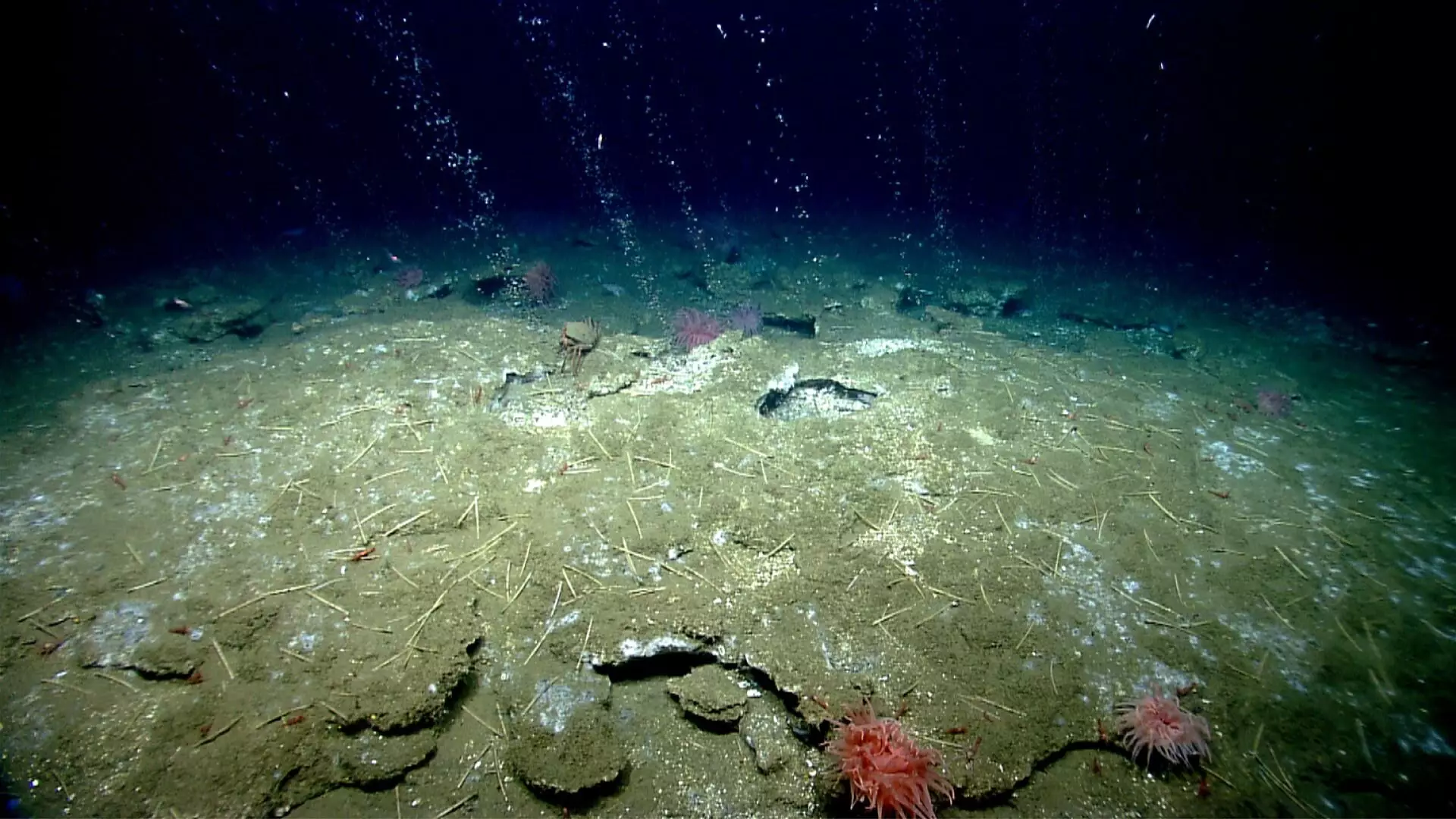Methane is a greenhouse gas with a potency 25 times greater than carbon dioxide. When combined with water at low temperatures and high pressure, methane forms methane hydrate, a solid substance found in large deposits under the seafloor. Estimates suggest that there are at least 1,800 gigatons of carbon stored in this form, with some figures reaching up to 20,000 gigatons. This is significantly more than the 475 gigatons of carbon emitted by mankind in the form of CO2 since the industrial revolution. The fragility of methane hydrate is a cause for concern, as a rise in temperature can lead to its breakdown into methane and water, releasing methane gas into the environment. This methane release, known as “methane seeps,” could exacerbate the greenhouse effect and contribute to climate change.
Research and Findings
Scientists are investigating the potential impact of methane hydrate on the environment and climate change. A study conducted by Jens Fiebig and his team, in collaboration with the University of Hamburg and Shanghai Ocean University, explores the destabilization of methane hydrate deposits and the outgassing of methane. The research team developed a method known as dual clumped isotope thermometry, which was recently published in Science Advances. This method allows for the measurement of heavy isotopes within carbonate minerals formed from methane outgassing. By analyzing the internal arrangement of heavy isotopes, researchers can calculate the temperature at which the minerals formed and identify the contribution of non-temperature effects.
Implications and Future Research
The findings of this research have significant implications for understanding the potential impact of methane hydrate on the greenhouse effect. By examining the “fingerprint” of the microbial community and methane flux in carbonate minerals, researchers can more accurately determine the sediment temperature during their formation. This information could help predict the extent of methane release from hydrate deposits in response to climate change. Further research is needed to fully assess the risks associated with methane hydrate destabilization and outgassing. By improving our understanding of these processes, we can better mitigate the potential effects on the environment and the climate.
Methane hydrate represents a significant reservoir of carbon that could potentially impact the greenhouse effect. Understanding the dynamics of methane release from hydrate deposits is crucial for predicting and mitigating the effects of climate change. The development of innovative research methods, such as dual clumped isotope thermometry, provides new insights into these processes. Continuing research in this area will be essential for addressing the challenges posed by methane hydrate and its potential role in the global climate system.


Leave a Reply